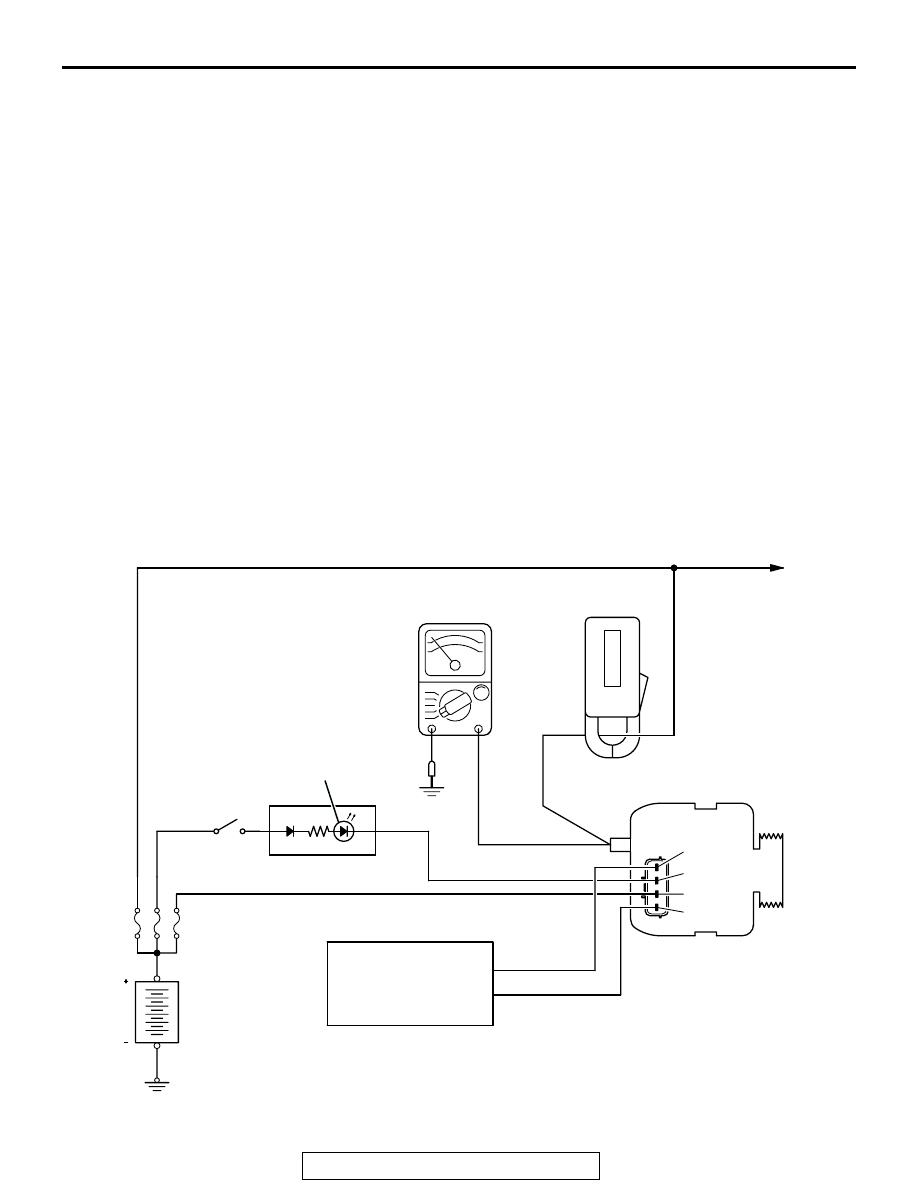Mitsubishi Galant (2004+). Manual - part 167

CHARGING SYSTEM
TSB Revision
ENGINE ELECTRICAL
16-9
10.With the engine running at 2,500 r/min, turn the
headlights and other lights on and off to adjust the
generator load so that the value displayed on the
ammeter is slightly above 30 A.
Read the voltmeter. Voltage reading at or below
limit value means voltage drop between generator
and battery is OK.
Limit value: maximum 0.3 V
NOTE: When the generator output is high and the
value displayed on the ammeter does not
decrease to 30 A, set the value to 40 A. Read the
value displayed on the voltmeter at this time.
In this case the limit value becomes maximum 0.4
V.
Adjust the engine speed by gradually decreasing
it until the value displayed on the ammeter is 30
A. Take a reading of the value displayed on the
voltmeter at this time.
11.If the value displayed on the voltmeter is above
the limit value, there is probably a malfunction in
the generator output wire. Check the wiring
between the generator "B" terminal and the
positive battery terminal (including fusible link).
If a terminal is not sufficiently tight or if the
harness has become discolored due to
overheating, repair and then test again.
12.After the test, run the engine at idle.
13.Turn off all lights and turn the ignition switch to the
"LOCK" (OFF) position.
NOTE: Vehicles for Canada, the headlight, tail-
light, etc. remain lit even when the lighting switch
is in "OFF" position.
14.Disconnect the engine tachometer or scan tool
MB991958.
15.Disconnect the negative battery cable.
16.Disconnect the ammeter and voltmeter.
17.Connect the negative battery cable.
18.Run the engine for 10 minutes at an idle.
OUTPUT CURRENT TEST
M1161001000391
AK303633
GENERATOR
AMMETER
(CLAMP-TYPE)
VOLTMETER
IGNITION
SWITCH
LOAD
B
FR
L
S
G
GENERATOR
MALFUNCTION
LIGHT
COMBINATION METER
BATTERY
+
AB
–
PCM